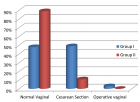Abstract
Mini Review
Management of Fungal Diseases of Temperate Rice in the Kashmir Valley, India
Ali Anwar*, Mohammad Najeeb Mughal, Efath Shahnaz, Sabiya Bashir, Qadrul Nisa, Fazil Fayaz Wani and Asha Nabi
Published: 04 July, 2023 | Volume 7 - Issue 2 | Pages: 048-049
Over half of the world's population is fed by rice. It is consumed as a staple food by many countries worldwide. It is affected by a number of diseases among which fungal diseases contribute to its significant loss. Kashmir Valley located in the North Western Himalayan region of India is known for various coarse varieties of rice for their taste and elite class. However, the diseases cause a serious problem for the local farmers as well as the people who also consume rice as their staple food. One of the best remedies for disease management is the adoption of integrated disease management strategies, which include the use of resistant varieties, cultural practices, and judicious use of fungicides. In this review, we present the major fungal diseases affecting rice in Kashmir Valley and their management using Integrated Plant Disease Management (IDM).
Read Full Article HTML DOI: 10.29328/journal.jpsp.1001105 Cite this Article Read Full Article PDF
Keywords:
Fungal; Integrated disease management; Kashmir; Rice; Temperate
References
- Anwar A, Bhat GN. Evaluation of fungicides against fungal diseases in rice under field conditions of Kashmir. Oryza 2008;45(2): 173-174
- Bhat GN, Fatima N, Rehman, MS, Anwar A. Chemical control of glume discolouration in rice under temperate conditions of Kashmir. New Agriculturist 2009;20(1/2): 15-17
- Najeeb S, Shikari AB, Parray GA. Status paper on rice in Jammu and Kashmir. Rice Knowledge Management Portal. 2017.
- Rijal S, Devkota Y. A review on various management methods of rice blast disease. Malaysian Journal of Sustainable Agriculture. 2020; 4(1):14-18.
- Anwar A, Bhat GN, Singhara, GS. Management of sheath blight and blast in rice through seed treatment. Annals of Plant Protection Sciences 2022;10: 285-287.
- Ahmad SG, Garg VK, Pandit AK., Anwar A, Aijaz S. Disease incidence of paddy seedlings in relation to environmental factors under temperate agroclimatic conditions of Kashmir valley. Journal of Research and Development. 2011; 11:29-38
- Anwar A, Teli MA, Bhat GN, Parray GA. Status of rice blast (Pyriculariagrisea), cultivar reaction and races of its causal fungus in temperate agro-ecosystem of Kashmir, India. SAARC Journal of Agriculture. 2009.; 7(2):25-37.
- Ahangar MA, Bhat ZA, Najeeb S, Lone ZA, Sajad H, Dar SH. Bakanae disease: a new threat to rice production under temperate ecology of Kashmir. Journal of Agriculture and Life Sciences. 2014;1(2):6.
- Mughal MN, Bashir S, Sofi NA, Wani, SA. Bio-efficacy of some fungicides against rice blast (Pyricularia grisea) under temperate agro-climatic conditions of Kashmir. Int. J. Curr. Microbiol. App. Sci. 2018; 7(7), 3511-3516.
- Shikari AB, Rajashekara H. Identification and validation of rice blast resistance genes in Indian rice germplasm. 2014.
- Dar MS, Ganaie SA, Raja W, Teeli RA. In-vivo investigation on antifungal properties of leaf extracts of certain medicinal plants through seed treatment and foliar sprays against rice blast disease (Magnaporthe grisea) in Kashmir, India. Annals of Agrarian Science. 2018; 16(3):267-271.
- Variar M, Cruz CV, Carrillo MG, Bhatt JC. Sangar RBS. Rice blast in India and strategies to develop durably resistant cultivars. In Advances in genetics, genomics and control of rice blast disease. 2009; 359-373. Springer Netherlands.
- Sharma, TR, Rai AK, Gupta SK, Vijayan J, Devanna, BN, Ray S. Rice blast management through host-plant resistance: retrospect and prospects. Agricultural Research. 2012; 1:37-52.
- Anwar A, Bhat MS. Efficacy of fungicides as seed treatment in the management of blast disease of rice in nursery bed. Agricultural Science Digest 2023;25(4): 293-295.
- Pooja K, Katoch A. Past, present and future of rice blast management. Plant Science Today. 2014;1(3):165-173.
- Bhat KA, Anwar A, Wani AH. Evaluation of bio-control agents against Rhizoctonia solani Kuhn and sheath blight disease of rice under temperate ecology. Plant Disease Research 2009b; 24(1):15-18.
- Lal M, Singh V, Kandhari J, Sharma P, Kumar V, Murti S. Diversity analysis of Rhizoctonia solani causing sheath blight of rice in India. African Journal of Biotechnology. 2014; 13(51).
- Abrol S, Singh S, Singh V, Basu UMER, Singh RA. Effect of agro-met conditions on the progression of brown leaf spot disease in Basmati-370 rice. Asian Jr. of Microbiol. Biotech. Env. Sc. 2022; 24(2), 335-340.
- Gupta V, Shamas N, Razdan VK, Sharma, BC, Sharma R, Kaur K, Kumar A. Foliar application of fungicides for the management of brown spot disease in rice (Oryza sativa L) caused by Bipolaris oryzae. African Journal of Agricultural Research. 2013; 8(25):3303-3309.
- Panigarhi A, Nanda R, Peshin R, Bagal YS. Assessing rice growers’ knowledge on plant protection measures in sub-tropics of Jammu and Kashmir. Indian Journal of Ecology. 2019; 46(1), 204-207.
Similar Articles
-
Impact of Calcium Phosphate Nanoparticles on Rice PlantHrishikesh Upadhyaya*,Lutfa Begum,Bishal Dey,P K Nath,S K Panda. Impact of Calcium Phosphate Nanoparticles on Rice Plant. . 2017 doi: 10.29328/journal.jpsp.1001001; 1: 001-010
-
Physiological impact of Zinc nanoparticle on germination of rice (Oryza sativa L) seedUpadhyaya H*,Roy H,Shome S,Tewari S,Bhattacharya MK,Panda SK. Physiological impact of Zinc nanoparticle on germination of rice (Oryza sativa L) seed . . 2017 doi: 10.29328/journal.jpsp.1001008; 1: 062-070
-
Advances in research of the structural gene characteristics of the aflatoxin biosynthetic gene clusterZhu-Mei He*,Qi-Zhang Li. Advances in research of the structural gene characteristics of the aflatoxin biosynthetic gene cluster. . 2018 doi: 10.29328/journal.jpsp.1001022; 2: 068-082
-
Primer Pairs for Rice (Oryza sativa L.) Bisulfite Sequencing StudiesMehmet Karaca*,Ayse Gul Ince. Primer Pairs for Rice (Oryza sativa L.) Bisulfite Sequencing Studies. . 2018 doi: 10.29328/journal.jpsp.1001024; 2: 091-098
-
Assessing the stand size of bay trees (Persea spp.) after exposure to laurel wilt disease in a North Florida PreserveAnthony M Rossi*,Christopher Bentzien . Assessing the stand size of bay trees (Persea spp.) after exposure to laurel wilt disease in a North Florida Preserve. . 2019 doi: 10.29328/journal.jpsp.1001030; 3: 042-049
-
Causal agents of Post-harvest Rot of Pumpkin (Cucurbita pepo L.) and their control using Indigenous Practices in Hong, Adamawa StateAnjili SM*,Kazi N,Chimbekujwo IB. Causal agents of Post-harvest Rot of Pumpkin (Cucurbita pepo L.) and their control using Indigenous Practices in Hong, Adamawa State. . 2019 doi: 10.29328/journal.jpsp.1001033; 3: 062-066
-
Effect of Khaya Senegalensis Bark and Oil on Post-Harvest Fungal Agents of Groundnut Seeds Rot in Adamawa State, NigeriaChannya FK*,Asama P,Anjili SM . Effect of Khaya Senegalensis Bark and Oil on Post-Harvest Fungal Agents of Groundnut Seeds Rot in Adamawa State, Nigeria. . 2019 doi: 10.29328/journal.jpsp.1001035; 3: 076-080
-
Comprehensive phenotypic characterization and genetic distinction of distinct goosegrass (Eleusine indica L. Gaertn.) ecotypesRobert A Kerr*,Tatyana Zhebentyayeva,Christopher Saski,Lambert B McCarty. Comprehensive phenotypic characterization and genetic distinction of distinct goosegrass (Eleusine indica L. Gaertn.) ecotypes. . 2019 doi: 10.29328/journal.jpsp.1001038; 3: 095-100
-
Potential of Pleurotus sajor-caju compost for controlling Meloidogyne incognita and improve nutritional status of tomato plantsSherin FA Awd Allah*,Doaa M Mostafa,Eman FA Awad-Allah. Potential of Pleurotus sajor-caju compost for controlling Meloidogyne incognita and improve nutritional status of tomato plants. . 2019 doi: 10.29328/journal.jpsp.1001042; 3: 118-127
-
Antifungal activity of epecific plant essential oils against fusarium graminearumEmre Yörük*,Esma Özsoy,Buket Kesercan. Antifungal activity of epecific plant essential oils against fusarium graminearum. . 2020 doi: 10.29328/journal.jpsp.1001052; 4: 060-062
Recently Viewed
-
Investigation of Stain Patterns from Diverse Blood Samples on Various SurfacesSonia Rajkumari*. Investigation of Stain Patterns from Diverse Blood Samples on Various Surfaces. J Forensic Sci Res. 2024: doi: 10.29328/journal.jfsr.1001061; 8: 028034
-
Dental Age Estimation using the Cameriere Method in Different Countries: A ReviewDesprika Youhana Sitio*, Ghora March Eka Solehuddin, Grace Sisilia Panjaitan. Dental Age Estimation using the Cameriere Method in Different Countries: A Review. J Forensic Sci Res. 2024: doi: 10.29328/journal.jfsr.1001062; 8: 035-039
-
A Comparative Analysis of Traditional Latent Fingerprint Visualization Methods and Innovative Silica Gel G Powder ApproachBhoomi Aggarwal*. A Comparative Analysis of Traditional Latent Fingerprint Visualization Methods and Innovative Silica Gel G Powder Approach. J Forensic Sci Res. 2024: doi: 10.29328/journal.jfsr.1001063; 8: 040-046
-
The Gut-Brain Axis: Exploring the Bidirectional Communication Between the Gut Microbiome and the BrainBhoomi Aggarwal*. The Gut-Brain Axis: Exploring the Bidirectional Communication Between the Gut Microbiome and the Brain. J Forensic Sci Res. 2024: doi: 10.29328/journal.jfsr.1001064; 8: 047-057
-
Analysis and Comparison of Social Media Applications Using Forensic Software on Mobile DevicesHüseyin Çakır*, Merve Hatice Karataş . Analysis and Comparison of Social Media Applications Using Forensic Software on Mobile Devices. J Forensic Sci Res. 2024: doi: 10.29328/journal.jfsr.1001065; 8: 058-063
Most Viewed
-
Evaluation of Biostimulants Based on Recovered Protein Hydrolysates from Animal By-products as Plant Growth EnhancersH Pérez-Aguilar*, M Lacruz-Asaro, F Arán-Ais. Evaluation of Biostimulants Based on Recovered Protein Hydrolysates from Animal By-products as Plant Growth Enhancers. J Plant Sci Phytopathol. 2023 doi: 10.29328/journal.jpsp.1001104; 7: 042-047
-
Sinonasal Myxoma Extending into the Orbit in a 4-Year Old: A Case PresentationJulian A Purrinos*, Ramzi Younis. Sinonasal Myxoma Extending into the Orbit in a 4-Year Old: A Case Presentation. Arch Case Rep. 2024 doi: 10.29328/journal.acr.1001099; 8: 075-077
-
Feasibility study of magnetic sensing for detecting single-neuron action potentialsDenis Tonini,Kai Wu,Renata Saha,Jian-Ping Wang*. Feasibility study of magnetic sensing for detecting single-neuron action potentials. Ann Biomed Sci Eng. 2022 doi: 10.29328/journal.abse.1001018; 6: 019-029
-
Pediatric Dysgerminoma: Unveiling a Rare Ovarian TumorFaten Limaiem*, Khalil Saffar, Ahmed Halouani. Pediatric Dysgerminoma: Unveiling a Rare Ovarian Tumor. Arch Case Rep. 2024 doi: 10.29328/journal.acr.1001087; 8: 010-013
-
Physical activity can change the physiological and psychological circumstances during COVID-19 pandemic: A narrative reviewKhashayar Maroufi*. Physical activity can change the physiological and psychological circumstances during COVID-19 pandemic: A narrative review. J Sports Med Ther. 2021 doi: 10.29328/journal.jsmt.1001051; 6: 001-007

HSPI: We're glad you're here. Please click "create a new Query" if you are a new visitor to our website and need further information from us.
If you are already a member of our network and need to keep track of any developments regarding a question you have already submitted, click "take me to my Query."



















































































































































